Beyond Tokyo and Kyoto, the geishas and the tea ceremonies, shrines, bullet trains and robot restaurants, there is still a delicious world to explore. If you're planning your second visit to Japan, or you want an alternative guide with off-the-beaten-path ideas, read on.
Itinerary Overview
This itinerary takes you from Tokyo into the Sayama Forest and beyond, into Nagano to visit the Snow Monkeys and the quaint postcard-perfect town of Shibu Onsen. Hike the Nakasendo Edo-period trail between the two restored post towns of Magome and Tsumago. Explore Kamikochi, a remote valley in the Hida mountain range and soak those tired feet in Hirayu Onsen. See the tallest dam in Japan, Kurobe Dam, as you reach the heights to walk through the Snow Corridor on the Tateyama-Kurobe Alpine route. See the Hida Folk Village in Takayama, and the UNSECO heritage world site in Shirakawa-go. Have tea at the old geisha tea houses of Kanazawa before cycling above the Seto Inland Sea on the Shimanami-Kaido road. Finally, discover the island of Enoshima and the port town of Yokohama. This is an adventure not to be missed!
Day 1: Tokyo - Roppongi Hills and Akasaka
After landing in Narita, we check in at Kaisu, a cute former Ryoten (a place where geishas would entertain guests) in Akasaka and then head out for lunch at the excellent and well-recommended Sushi No Midori, inside Biz Towers. Akasaka is a bit of a sophisticated commercial district, with luxury hotels, concert halls and upscale bistros. And whilst we wouldn't call this our vibe, we picked it to explore a more suburban, different face to Tokyo to what we've experienced before.
After lunch we walk to Hinokicho Park, an urban oasis of peace and calm, to enjoy the views and people-watch. The excellent Suntory Museum of Art is just across the road (under renovations until May 2020). We then make our way to Roppongi Hills, an entertainment and shopping complex where one can find the Mori Art Museum and the Mori Art Garden. Both have interesting, fun and accessible exhibitions. Top tip: art museums often have unique souvenirs!
Day 2: Tokyo - Ghibli Museum and Shinjuku
In the morning we visit Studio Ghibli Museum in Mitaka. We've bought tickets well in advance, and as Studio Ghibli fans (ever seen Totoro, Spirited Away or Only Yesterday?) we are excited. The museum was designed by Hayao Miyazaki's (the director) son, who's great vision and creativity can be enjoyed by children and adults alike. Each room carefully and beautifully details the filmmaking journey of the studio.
In the afternoon we head to Shinjuku where we meander along streets behind the station to stumble upon Takamaru, a rustic fish shack serving lunch menus to locals. We devour a sashimi bowl, miso soup, rice, fried oysters and koroke (potato croquettes). Shinjuku is best explored at night though, with the bright lights of every billboard overhead shining along Central Road and adjacent streets. This is the Tokyo you see in films.
Day 3: Roadtrip to Nagano - Shibu Onsen Town
We pick up our rental car and drive to the Sayama Hills, a great place for a day trip from Tokyo, with lush forests and peaceful lakes. There are a ton of outdoor activities to try in the Sayama forest and the best place to start is at the information centre. On this trip we've decided to visit some of the forests protected by a non-for profit organisation called Totoro's Forest (in allusion to Studio Ghibli's My Neighbour Totoro), which we have written about extensively here.


We continue to Yamanouchi, the region famous for the Snow Monkeys. Most people choose to stay near the Snow Monkey park entrance, but in our opinion, that's a big loss. Having no more than one long pedestrian street and two or three narrow roads, Shibu Onsen is a quaint sleepy village, just the perfect size to explore in one evening. It's known for its 9 outdoor Japanese hot spring baths, which can only be used by guests of Shibu Onsen Ryokans (traditional guesthouses).
We make a brief visit to the small and quiet Shiga Kogen Brewery where an attendant lets us taste different types of Sake. Bellies full of sake, wearing our kimonos and Geta (wooden Japanese sandals), we precariously walk back to Matsuya, grab a key to public bath #8 and soak in the impossibly hot water. We then enjoy a private dinner (booked in advance). These dinners are often elaborate and made up of several little dishes. Alongside the hot baths, these are one of the highlights of staying in a Ryokan.




Day 4: Jingokudani Snow Monkeys
We drive up to the Snow Monkey park carpark and trek slowly uphill for about 40 minutes to get to the entrance. When we get there park workers whistle loudly, signalling something to the macaques, who descend the mountains by dozens. We enjoy an hour or two of observing the macaques bathe and play, but we leave with a sour aftertaste: we shouldn't have come here at all. This might have been an off-the-beaten path place to visit a few years ago, but the amount of tourists visiting now cannot be good for the animals' welfare.
A couple of hours later we're in Matsumoto. Matusmoto could be one of the most underrated large cities we've been to in Japan. It's relaxed, friendly, modern and impossibly hip. We park up and get some soba noodles at Soba-dokoro Kippo. Then we walk to Matsumoto Castle, one of the best castles to visit in Japan for its great displays, friendly volunteer guides and beautiful history.
Later, we check in at Tabishiro. In the evening, we walk around town and instantly fall in love with it. Cute cafes, galleries, second-hand shops, bars and libraries. We stop at this book store and drink an umeshu (plum wine). Then we move on to the tiny 8oz standing bar next door where we meet the owners of C.Countly clothing. We have such a good time chatting that we decide to grab dinner at Hikage izakaya.
Day 5: Kiso Valley - The Nakasendo Trail
In the morning, as soon as the Matsumoto City Museum of Art opens, we enter and head straight for the permanent Yayoi Kusama exhibition. Even Chris, who wasn't so keen on spending a morning of our trip in an Art Museum, is gobsmacked as we experience Yayoi's most incredible installations.
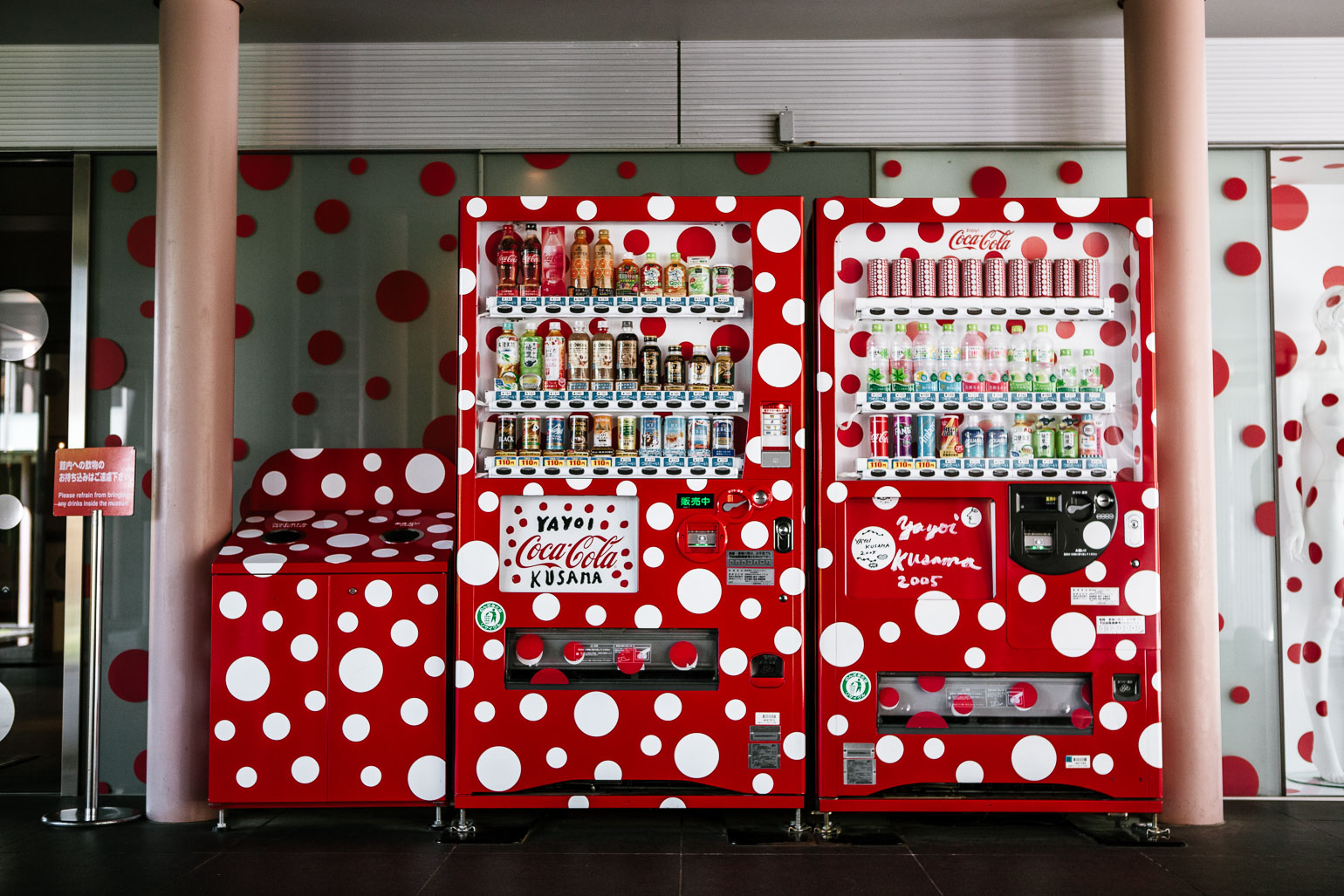
A couple of hours later we're driving to the Kiso Valley. Here, we'll stop at Magome, a post town serving travellers of the Nakasendo - a route that linked Tokyo to Kyoto in the Edo period. The town has been restored and one can visit it on one fell swoop of its main pedestrian road. We leave the car at Magome and walk the Magome-Tsumago trail, an 8km hiking trail through forests and countryside.


Our hearts feel full of Japan as the sun goes down and we climb back onto our car (we've caught a bus to take us back to the starting point). We drive off into the mountains to our next lodging in the town of Hirayu Onsen.
Day 6: Kamikōchi & Hirayu Onsen
We wake to an insane view of tree-covered mountains on all sides. At the bottom of the street we board a coach to Kamikochi (only a few minutes' ride) and get off at Taisho Pond. The lake is azure and clear and full of tourists. After photos we walk through the forest and marshes. We see ponds tainted deep orange from iron and manganese, clear streams and lush trees covering the bed of the forest.
On our way back we stop by the Imperial Hotel (called the Teikoku hotel here), which was the inspiration behind the hotel in the film The Wind Rises (also a Ghibli film). We eat some delicious desserts and drink tea whilst we rest our feet.
In the afternoon we visit Hirayu no Mori, an inn with dozens of rotenburo (outdoor hot springs). After soaking and napping, we drop off the car in Matsumoto and take a train to Shin Omachi.
Day 7: Toyama Prefecture - Tateyama-Kurobe Alpine Route
The Tateyama-Kurobe alpine route has been on our itinerary since I first saw a picture of the snow corridor, a path flanked by two huge walls of ice. The entire route has several scenic spots, and to transverse it you have to take up to 8 different modes of transport!
We start by catching a bus to Ogizawa at 8am. The bus goes through a lovely, peaceful countryside route. The morning sun already beats down with energy; the rice paddy fields glisten. At Ogizawa we are ushered into the trolley bus, which takes is to Kurobe Dam. We take our time to explore the magnitude of this miracle of engineering. We then board a cablecar, ropeway and tunnel trolley bus. Finally, we reach Murodo, where the famous snow wall is.
After lunch walk around the lake at the top of the mountain and later board a cablecar and train and back to Toyama, where we pick our bags and board a train for Takayama.
Day 8: Takayama
We're taking it easy today. We walk from our traditional inn Minshuku Sosuke to the Takayama Jinja shrine, where a modest farmers' market has congregated. Old ladies and gents sell home-grown rice, pickles, vegetables and crafts. We browse before deciding to go inside the shrine, accompanied by an insightful volunteer guide. Even if you are a bit ‘shrined out’, which can happen in Japan, this shrine is well worth a visit. More than just a structure to see, it has lots of interesting function rooms, kitchens, workhouses and a beautifully preserved original garden.
The highlights of our afternoon include a visit to Koma, a proper Okonomiyaki restaurant where they cook the rich, savoury pancakes in front of you. Koma, the lady who owns it, is also the cook, and looks like a character out of any beloved children's film. After, we find Hanakawa Rent a Bike, where we meet the owner, and older man who is just so chatty and adorable.
We cycle to the Hida Folk Village museum - a collection of houses from different periods with items that retell stories of their former owners. A beautiful and haunting experience. We recommend going two to three hours before closing time, so you catch it a bit emptier and can fully enjoy the atmosphere.


We ride back down the hill to return the bikes and get beers at the incredible EBIS Cafe & Pachinko (slot machine and pinball rooms) whose owner is welcoming and fun: he teaches us how to properly play Pachinko whilst we drink our beers!

Day 9: Shirakawa-go UNESCO World Heritage Site
In the morning we visit the Takayama Festival Floats Exhibition Hall to see the huge floats and costumes that locals use twice a year, during their spring and autumn festivals. Then we depart.
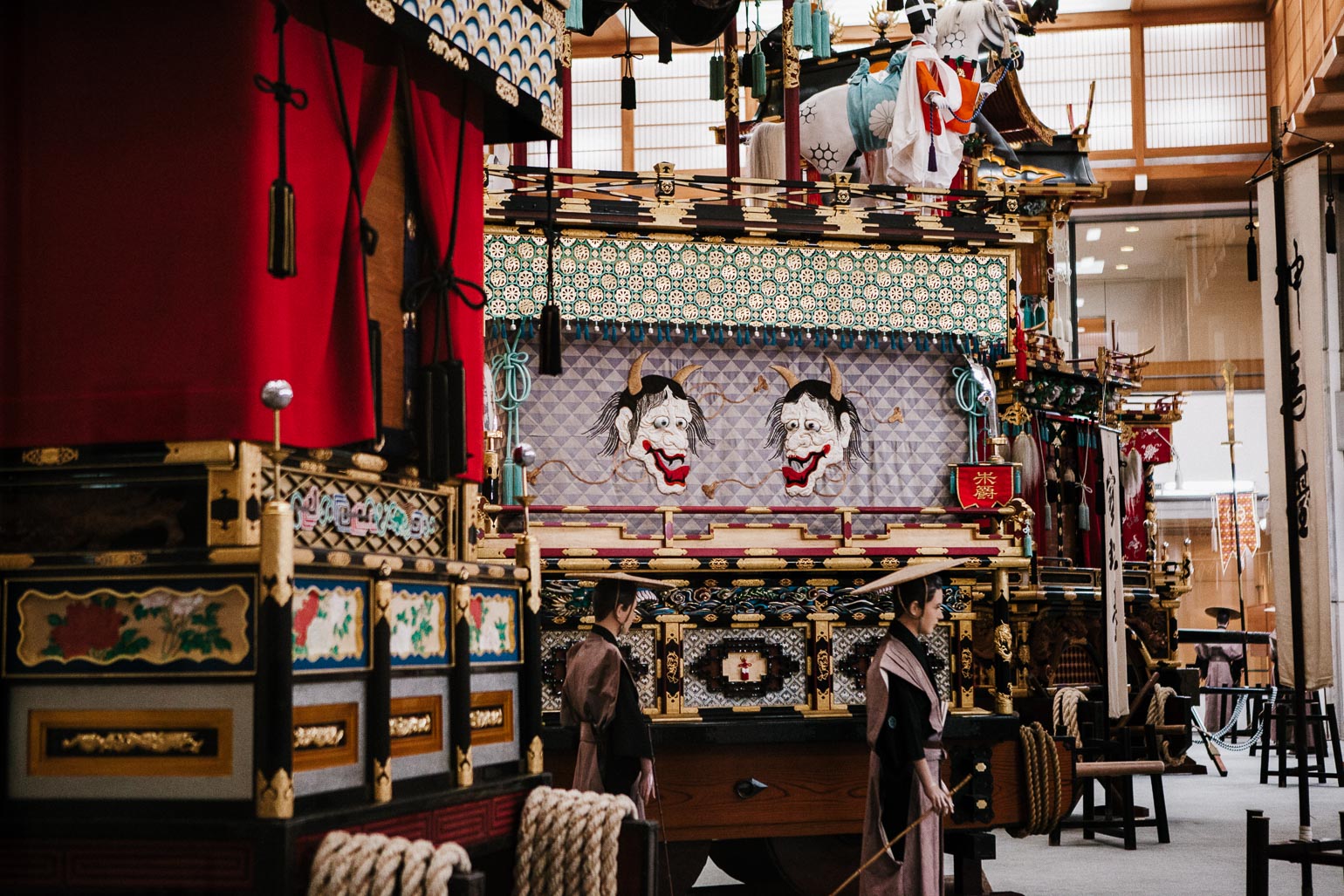
Shirakawa-go could be summed up concisely: a traditional Japanese mountain village of thatched houses. In reality it is something quite exceptionally different.

The village, along with neighbouring Gokoyama, have remained relatively unchanged architecturally for 100s of years, so much so they are now listed as UNESCO world heritage sites. Part of the reason why the villages have remained so unspoilt is due to their isolation, cut off from the rest of the world and less affected by the feudal Edo period and post-war modernisation. Whilst you can stay overnight, we opt for a 4 hour visit (more than enough time to walk the village and have a meal).


After a late lunch we catch a coach to Kanazawa - or little Kyoto - as it's also known. We check in at the boutique-style Hatchi Share Hostel near the old town and drink our complementary umeshu. Later, we stumble upon an Izakaya (bar & food) where we sit at the bar alongside Japanese locals who've just finished work.
Day 10: Kanazawa Gardens & Tea Houses
Breakfast takes place at the busy Omicho Market, a food market selling fresh fish, vegetables, fruit and anything your Japanese weekly grocery shop might include. We then walk to Kanazawa Castle, where yet another kind volunteer guide takes us through the grounds, explaining its history and significance. After, she guides us through Kenroku-en, one of Japan's 3 most beautiful landscaped gardens. This too, proves to be a beautiful and serene experience.


Next, we walked through neighbourhoods to reach the Ninjadera (Ninja temple, booked in advance). Hear us out - this is not some tourist trap. It wasn't a temple for ninjas, instead it was a house designed to confuse and baffle any ninjas or assassins attempting to kill the lord of the temple via booby traps, hidden rooms and false doorways.

In the evening we visited a restored Chaya (tea house) in the popular Higashi Chaya district in Kanazawa. Geishas used this chaya to entertain guests with talks, dances and playing instruments.
Day 11: Cycling the Shimanami-Kaido
After Kanazawa, we went to stay with friends who live in the countryside - about an hour inland from Fukuyama near Hiroshima. But for your 2-week second-time visit to Japan, we'll skip to what we did just after that: went to Onomichi.
Onomichi is a cool little surf town with a great vibe, and the popular starting point for people wanting to cycle the Shimanami-kaido. An expressway consisting 60 km of road spread across some of the longest suspension bridges, it has long stretches that hang over the Seto Inland Sea. This bike route is incredible and can be done both by professionals or amateurs wishing to enjoy a different experience.
You don't have to do the full 60km - we actually did about 20km with our friend, his 3 and 6 year olds kids. In the evening we stay at the super-hip U2 hotel, which is made with bikers in mind (you can bring your bikes into the hotel room!).
Day 12: Enoshima Island
We arrive at Enoshima Island, a westernised town South West of Tokyo, instead of returning to Tokyo to spend the last days before the end of our trip. Enoshima is a small island accessible by foot, much visited by locals during the summer as well as visitors - it is a well-transited place.
To avoid the crowds, we cross into Enoshima very early, even before some businesses have opened. The road into Enoshima becomes a path up its hill, flanked by restaurants and souvenir shops. In the middle you reach the Enoshima shrine honoring Benzaiten, the Buddhist goddess. At the top, you can try some Tako Senbei (octopus cracker), a local snack, and visit the English-style Samuel Cocking Garden and Sea Candle lighthouse.
When our feet clamour some rest, we sit down at Loncafe, set within the gardens, and enjoy some fabulous French patisserie overlooking the sea beyond. At night, we retreat back to Enoshima Guesthouse, a tiny and beautiful guesthouse.
Days 13 & 14: Yokohama and fly home
Yokohama was one of the first ports in Japan opened to foreign trade. Notably, it was also the home to foreign diplomats, and a bustling place to get your hands on the latest imported fashion from Europe and beyond. What's beautiful about Yokohama is that it affords you a chance to stroll it and discover it at a leisurely place. Enjoying fresh baked goods, little quaint shops, incredible views over the bay and visits to grand European-style post-war houses, buildings and gardens.

Since Yokohama is only a short train ride away from Tokyo, it's also an ideal spot for a day-trip if you're staying in Tokyo on your final days in Japan. Start with a stroll around the Minato Mirai waterfront area and climb up the Yokohama Landmark Tower - the sky garden inside has some of the best views. Wander to Red Brick Warehouse for shopping and then on to Yokohama Chinatown for a spot of lunch and to get lost amongst the beautiful buildings.
One of our favourite areas was Motomachi. Walking up the hill past Bluff Bakery you get to walk past Motomachi Park, where the Ehrismann Residence and the Foreign Cemetery are - both worth a visit. Further down the road there's 'Home of a Diplomat' and the Yamate Italian garden. At nighttime the Noge area is great for live jazz and a wander by the riverside.
How We Did This - Tips Before You Go
- We rented a car from day 2 until day 6 and drove into the more remote areas, where it's not so convenient to catch infrequent trains and early buses
- Driving in Japan is relatively easy if you're used to driving abroad, or if you normally drive on the left-hand side. Traffic is respectful, and soon you're motorways anyway, where it's easier to drive and follow Google Maps
- We started using our 7-day Japan Rail Pass from day 6, but you need to make sure you exchange them much earlier - the best place to exchange your Rail Pass is on arrival at the airport. You can then activate your Rail Pass at any JR office when you're ready to use it
- This trip requires a rather comfortable budget. We spent around £1500 / $2000 per person excluding flights. The accommodation is by no means on the luxurious side of things, but all our lodgings are mix between value, comfort and experience



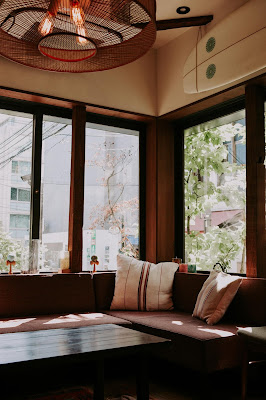

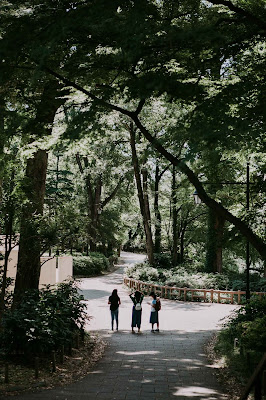














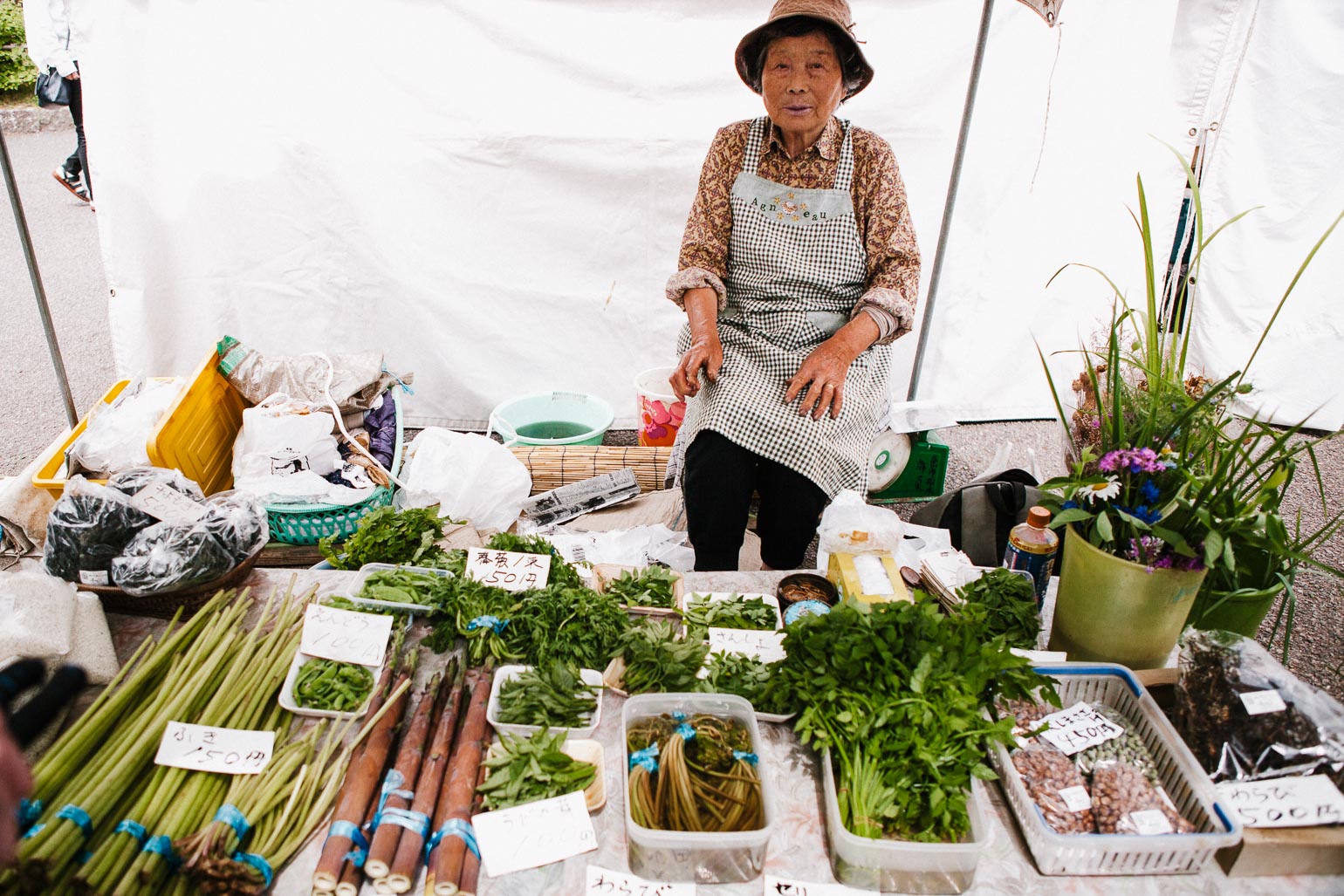



























No comments